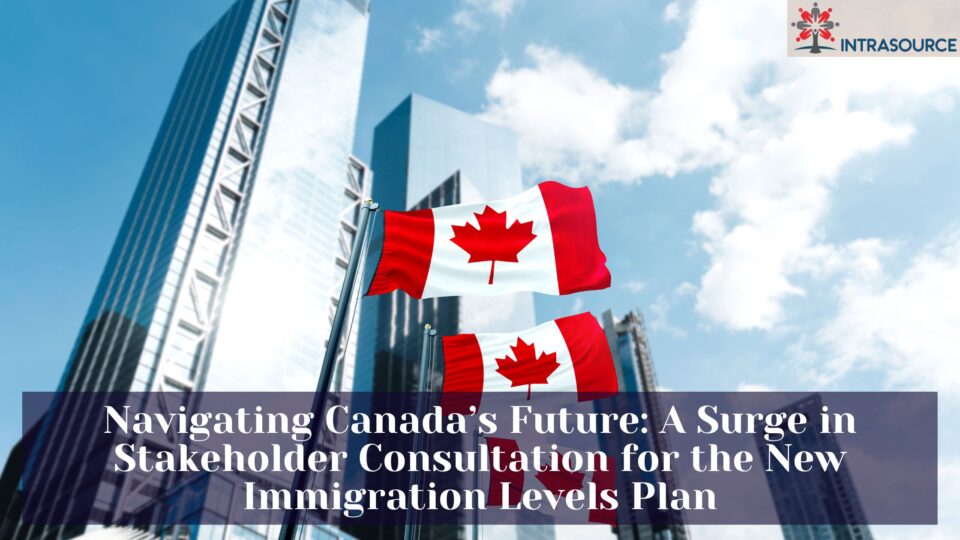When Immigration, Refugees and Citizenship Canada (IRCC) prepares its Immigration Levels Plan, a cornerstone of its strategy involves extensive stakeholder consultation. Recent reports reveal that in developing the Immigration Levels Plan for 2024-2026, IRCC has dramatically increased stakeholder engagement, doubling the number of consultations compared to the previous year. These discussions are critical in shaping IRCC’s policies regarding the number of immigrants welcomed annually and ensuring the integration and economic support mechanisms are robust.
In this quest to balance welcoming newcomers with bolstering Canada’s economy, Immigration, Refugees and Citizenship Canada (IRCC) has recently showcased its dedication to inclusivity by significantly ramping up its stakeholder consultations. Insightful feedback from these consultations plays a critical role as IRCC crafts the intricately designed Immigration Levels Plan for 2024-2026. Discover how this heightened engagement underscores a holistic strategy aimed at enriching Canada’s vibrant society.
Stakeholder Consultation Expands for Immigration Levels Plan
The expansion in stakeholder consultation is emblematic of IRCC’s commitment to a ‘whole-of-government’ approach. Through a meticulous process involving an online survey between July and August 2023, IRCC extended invitations to an impressive 4,780 stakeholders—a substantial increase from the 2,867 stakeholders invited in 2022. This inclusive initiative draws on insights from a diverse array of organizations each year, including non-profits, businesses, academic institutions, settlement services providers, and more. These groups possess firsthand perspectives on various aspects of immigration in Canada that are vital for crafting an informed Immigration Levels Plan.
Canadian Immigration Targets Reflect Economic and Labor Priorities
Each year, the Immigration Refugees and Protection Act (IRPA) mandates that Immigration, Refugees and Citizenship Canada (IRCC) delineate annual immigration thresholds for the upcoming year, including provisional figures for the subsequent two years. Abiding by this norm, IRCC has propounded an objective to welcome 485,000 new permanent residents through various avenues: economic immigration programs, family class sponsorships, and refugee as well as humanitarian classes for this year.
In a bid to promote sustainability and alleviate the strains of housing shortages and escalating cost of living issues, IRCC has set uniform targets of 500,000 new permanent residents for both 2025 and 2026. Aligning with the nation’s long-term goals requires a scrupulous balance—particularly when factoring in Canada’s acute need for skilled immigrants to fill critical voids across high-demand employment sectors such as healthcare, technology, agriculture, and construction.
Reflecting these demands, nine out of 10 stakeholders who responded to an Access to Information and Privacy (ATIP) request positioned economic advancement and labor force needs as paramount incentives for elevating skilled immigrant inflow into Canada.
Advocating for Increased Economic Immigration
A collective call among respondents favored a rise in economic immigration. According to data gathered, 62% endorsed a greater influx of economic class immigrants over those entering through family sponsorship or refugee/humanitarian avenues when contemplating increased immigration levels.
In tune with the country’s workforce disparities is the suggestion that targeted regional initiatives could potentially underpin labor market requirements distinctively in smaller communities as well as burgeoning medium-sized towns.
Respondents have also advocated for Express Entry draws that are category-based. Such draws would prioritize specific attributes like occupations to effectively uphold Canadian workforce demands as well as bolster economic objectives. Yet it’s not solely high-skilled workers under discussion—respondents urge for alternative solutions catering to less skilled roles not eligible under Express Entry. Moreover, they highlight an urgency to forge additional pathways toward permanent residence for those temporarily employed within Canada’s borders along with international students—groups contributing significantly to the fabric of Canadian society.
Through meticulous planning aligned with stakeholder feedback, Canada charts its course forward on immigration—a course firmly anchored in bolstering its economy while attending conscientiously to societal needs.
Housing Shortfall and Integrating Newcomers in Canada
As Canada grapples with an affordable housing crisis, newcomers are finding it increasingly difficult to secure a place to reside. Recent findings reveal a staggering consensus, with 96% of survey participants asserting that sustained investment in housing is essential for the viability of immigration.
The healthcare sector is similarly under duress, strained not only by a growing populace but also by an aging demographic in urgent need of medical services. With the anticipation of nine million Canadians approaching retirement within the next six years, the pressure on healthcare infrastructure is mounting.
Adding to these challenges is the issue of foreign credential recognition. Stakeholders emphasize the importance of support for newcomer settlement and integration. Employment opportunities and career progression are deemed critical, particularly in licensed healthcare professions where provincial accreditation is mandatory—a process fraught with delays.
In acknowledgement of these concerns, the Canadian federal government has proactively allocated an additional $86 million to 15 entities aimed at expediting credential validation for internationally trained health professionals as of January.
Moreover, the call for improved transit infrastructure rings clear, especially within smaller urban centers. The current deficiency hinders newcomers without personal transportation from accessing job opportunities, settlement resources, and healthcare facilities, highlighting yet another dimension of the integration challenge facing Canadian society.


